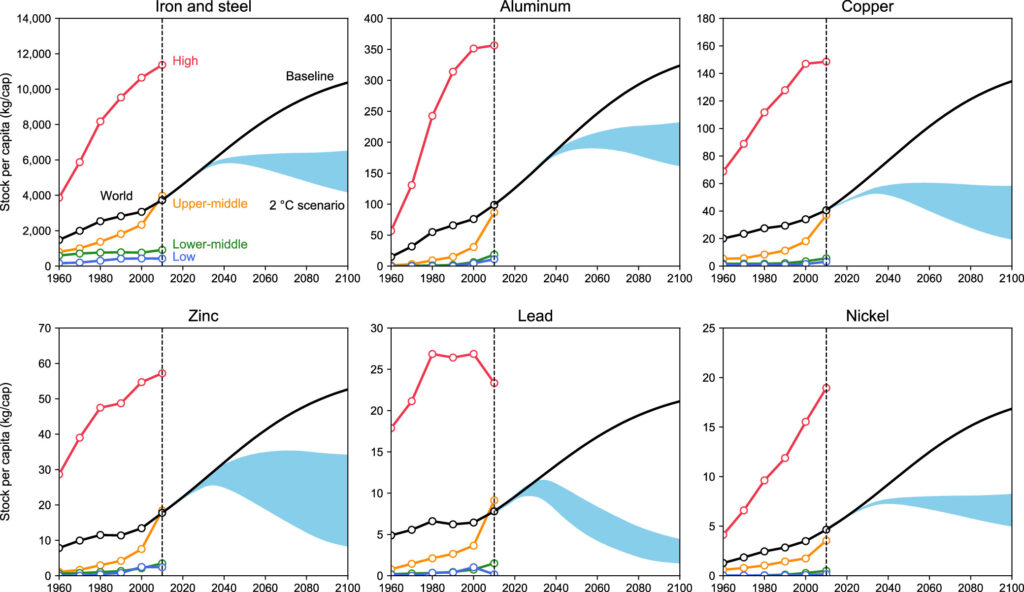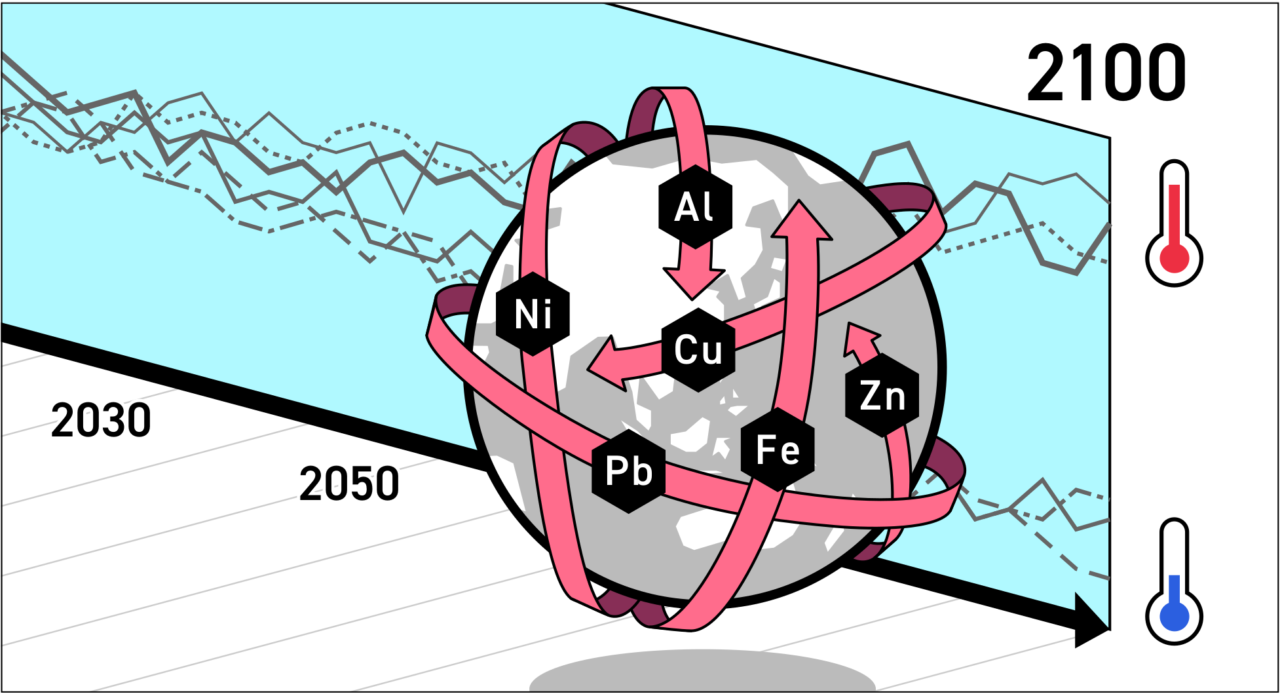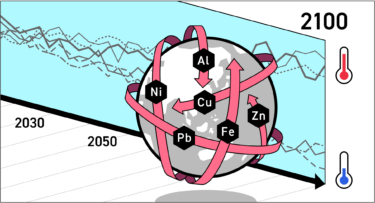
Abstract
Metals underpin essential functions in modern society, yet their production currently intensifies climate change. This paper develops global targets for metal flows, stocks, and use intensity in the global economy out to 2100. These targets are consistent with emissions pathways to achieve a 2 °C climate goal and cover six major metals (iron, aluminum, copper, zinc, lead, and nickel). Results indicate that despite advances in low-carbon metal production, a transformative system change to meet the society’s needs with less metal is required to remain within a 2 °C pathway. Globally, demand for goods and services over the 21st century needs to be met with approximately 7 t/capita of metal stock—roughly half the current level in high-income countries. This systemic change will require a peak in global metal production by 2030 and deep decoupling of economic growth from both metal flows and stocks. Importantly, the identified science-based targets are theoretically achievable through such measures as efficient design, more intensive use, and longer product lifetime, but immediate action is crucial before middle- and low-income countries complete full-scale urbanization.
Authors
Takuma Watari, Keisuke Nansai, Damien Giurco, Kenichi Nakajima, Benjamin McLellan, and Christoph Helbig
Journal
Environmental Science & Technology, 2020, Link


